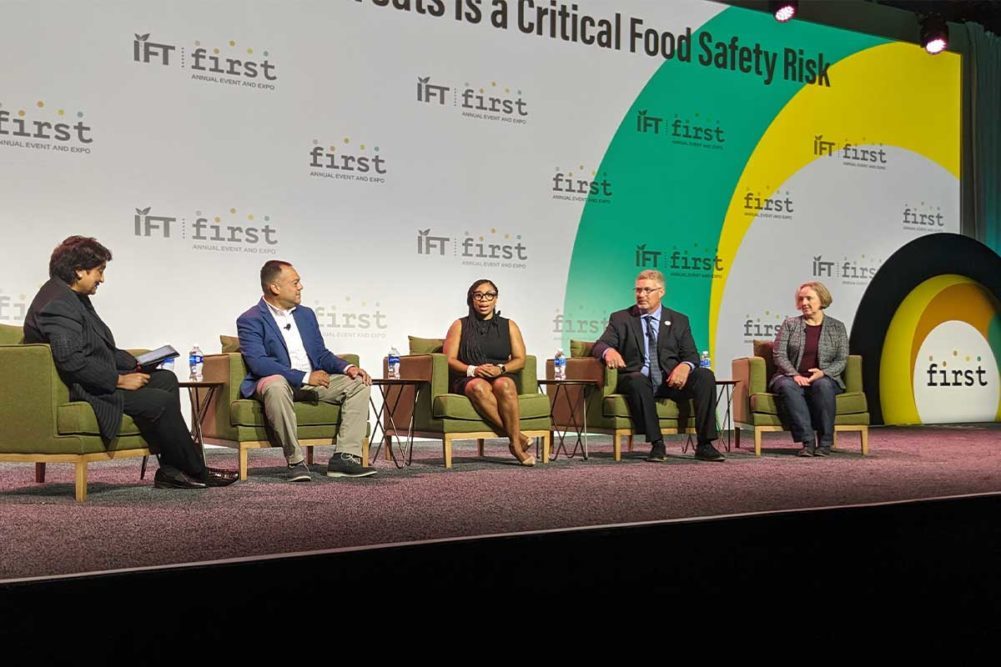CHICAGO — Planning for the unexpected when it comes to food safety and food fraud can seem daunting, but companies put themselves at risk if they don’t. Ronaldo Gonzalez, PhD, chief science officer, The Acheson Group; Trish Tolbert, North America director of food safety and sanitation, McCain Foods; Jennifer van de Ligt, senior consultant, Toxstrategies; and Jeff Varcoe, vice president, quality assurance and food safety, The J.M. Smucker Co., detailed how food companies can prepare and protect themselves during a panel at the IFT FIRST Expo, held July 16-19 in Chicago.
Since 2020, the food industry has been shown to lack necessary redundancy to eliminate points of criticality and endured back-to-back incidences of food safety challenges, cyber attacks and food fraud that have tested the industry’s resilience. van de Ligt pointed out, however, that despite the difficult times, the food industry has proven to be extremely resilient.
“During the past three years, the food industry hasn’t stopped, despite the setbacks; you’ve kept going, and because of that, people didn’t go hungry,” she said.
The past few years have proven that the industry must be prepared for the unexpected and that challenges are changing with recent cyber attacks on food companies, compromising the food system. This environment has encouraged the industry to become more proactive and collaborative across the supply chain and even with government regulators.
Panelists encouraged food companies to assess their risk and have plans in place.
“You need to be organized with a crisis management system,” Tolbert said. “You need to know who your decision-makers are, what are your media guidelines. Know your contacts for both government and suppliers and keep those contacts updated. There will be a lot of confusion when a crisis does happen if you aren’t organized.”
Related to that, Varcoe recommended that food companies fully understand their supply web —an analogy he thought better described supply chains. Focusing your time and money on critical assets will go a long way to protecting food products, he said.
Tolbert noted that relationships with suppliers and transparency were critical to ensuring a safe food supply. She recommended focusing on high-risk ingredients when it comes to testing and simplifying ingredient inventory to simplifying tracking.
Cyber security has risen to prominence as a point of vulnerability for food safety. van de Ligt made the point that hackers target people, not companies, and that food companies should encourage cyber hygiene as much as they do food hygiene, likening changing passwords often to washing hands.
All of this hinges, however, on training and educating employees.
“Assessing risk is important, but you can have the best food safety program, but if you don’t educate and train your employees,” Dr. Gonzalez said, “your program won’t work.”


